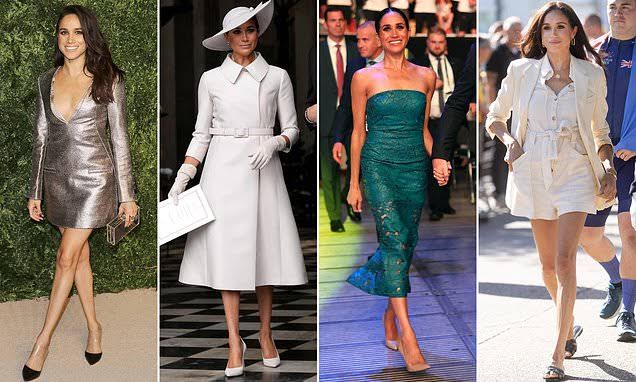ROYAL FAMILY
Breaking: The Hidden Messages in Meghan Markle’s Drastic Fashion Rebrands That Reveal Who the Duchess REALLY Wants to Be….See More 👇

The Hidden Messages in Meghan Markle’s Drastic Fashion Rebrands That Reveal Who the Duchess REALLY Wants to Be
Meghan Markle has always understood the power of a well-chosen outfit. From her days as Rachel Zane on Suits to her brief tenure as a working royal and now as a California-based entrepreneur, her wardrobe has been a canvas for storytelling.
Each sartorial shift—from tailored suits to royal-approved sheath dresses to breezy maxi dresses—carries a message about who she is and, more tellingly, who she wants to be.
As Meghan navigates her post-royal life with the launch of her lifestyle brand As Ever and a Netflix series, With Love, Meghan, her fashion choices reveal a woman striving to balance authenticity, influence, and independence.
This article unpacks the hidden messages in Meghan’s drastic fashion rebrands, tracing her evolution and decoding what her style says about her aspirations.
Act One: The Hollywood Hustler (Pre-2016)
Before the world knew her as the Duchess of Sussex, Meghan Markle was a working actress with a knack for branding.
Her style in the early 2010s, during her Suits era, was polished yet approachable—think fitted blazers, skinny jeans, and pointed-toe pumps.
Off-screen, she leaned into a California-cool aesthetic, favoring relaxed denim, white button-downs, and statement accessories like oversized sunglasses. Her lifestyle blog, The Tig, showcased this blend of glamour and accessibility, with posts about affordable beauty products alongside designer handbags.
Meghan’s pre-royal fashion sent a clear message: she was ambitious, relatable, and in control of her narrative.
A 2015 collaboration with Edie Parker for a clutch emblazoned with “Ms Tig” underscored her entrepreneurial spirit and financial independence.
Her wardrobe wasn’t just about looking good—it was about building a persona that resonated with aspirational women. She wanted to be seen as a hustler with heart, someone who worked hard and lived well without pretense.
Yet, even then, her style hinted at bigger ambitions.
Red-carpet appearances in sleek gowns by designers like Zuhair Murad showed a woman comfortable in the spotlight, ready for a larger stage.
Meghan wasn’t just dressing for Toronto’s film scene—she was preparing for global attention.
Act Two: The Royal Reinvention (2016–2020)
When Meghan’s engagement to Prince Harry was announced in November 2017, her fashion took a sharp turn. Gone were the casual jeans and plunging necklines; in came structured coats, modest hemlines, and neutral tones.
Her engagement photos featured a $75,000 Ralph & Russo gown—a sheer, embellished statement that sparked debate for its extravagance.
It was a bold choice, signaling her arrival as a royal, but it also hinted at the tension that would define her time in the monarchy: how to balance personal flair with institutional expectations.
As a working royal, Meghan faced a unique challenge. The royal family’s style code—relatable yet regal, understated yet polished—demanded conformity, but Meghan’s background as an American actress made her a natural disruptor.
She gravitated toward tailored sheath dresses by Givenchy (her wedding dress designer), Stella McCartney, and Victoria Beckham, often in navy, cream, or forest green. Her love for boatneck silhouettes and minimalist accessories earned comparisons to Audrey Hepburn, projecting elegance with a modern edge.
But Meghan also pushed boundaries. Her 2018 tour of Australia, Fiji, and Tonga showcased bold prints and vibrant colors, like a red Self-Portrait dress that broke from royal norms. She championed women designers and sustainable brands, such as Reformation and Outland Denim, signaling a commitment to social impact.
Her choice of black nail polish during a 2018 awards ceremony—a royal faux pas—read as a subtle rebellion, a nod to her individuality.
The message was clear: Meghan wanted to be a royal on her terms, blending tradition with progress. She aimed to be a bridge between the monarchy’s past and a more inclusive future, using fashion to highlight causes like sustainability and female empowerment.
Yet, the scrutiny she faced—criticism over everything from messy buns to bare shoulders—suggested the institution wasn’t ready for her vision. By 2020, when she and Harry stepped back from royal duties, her wardrobe began to shift again, reflecting a rejection of those constraints.












